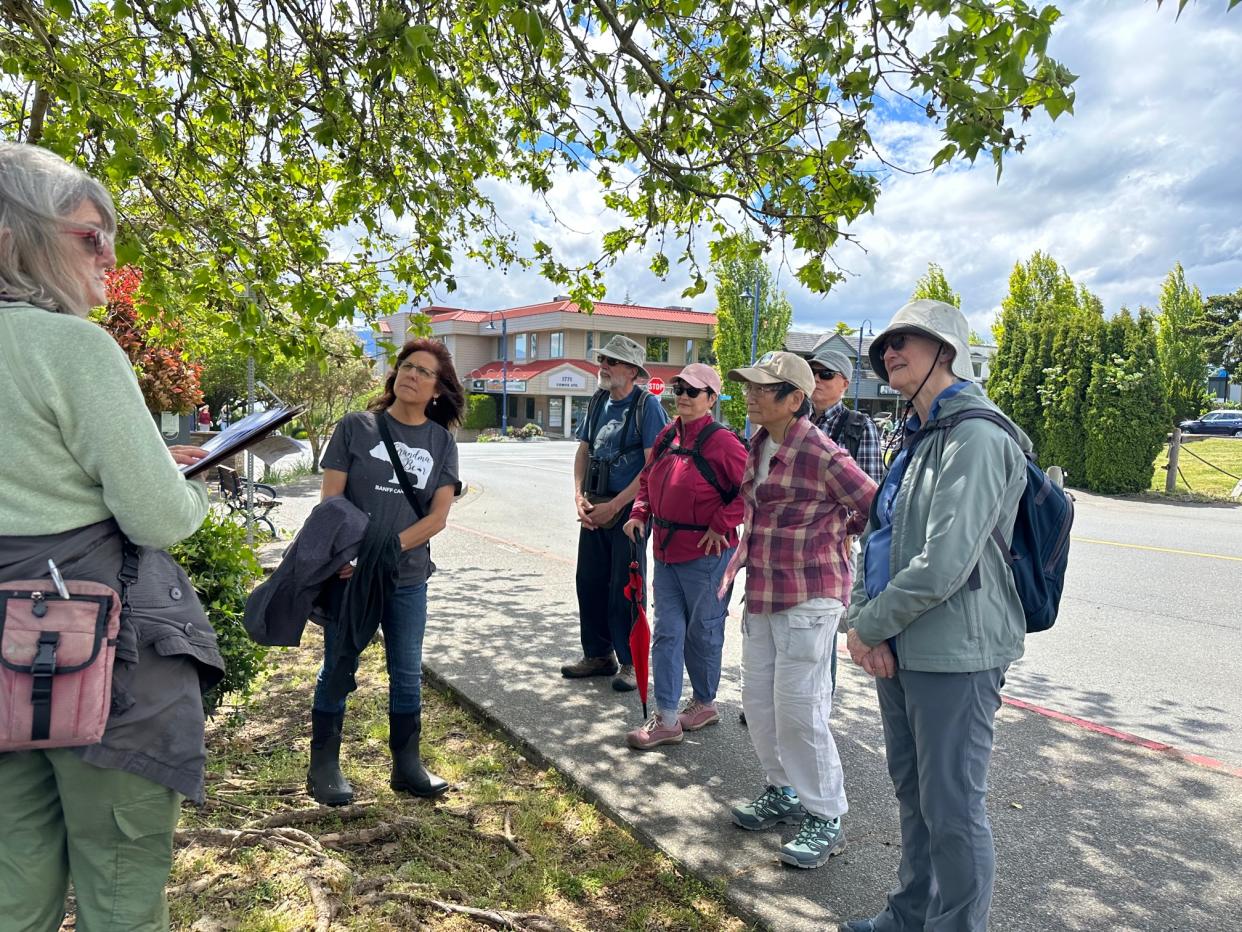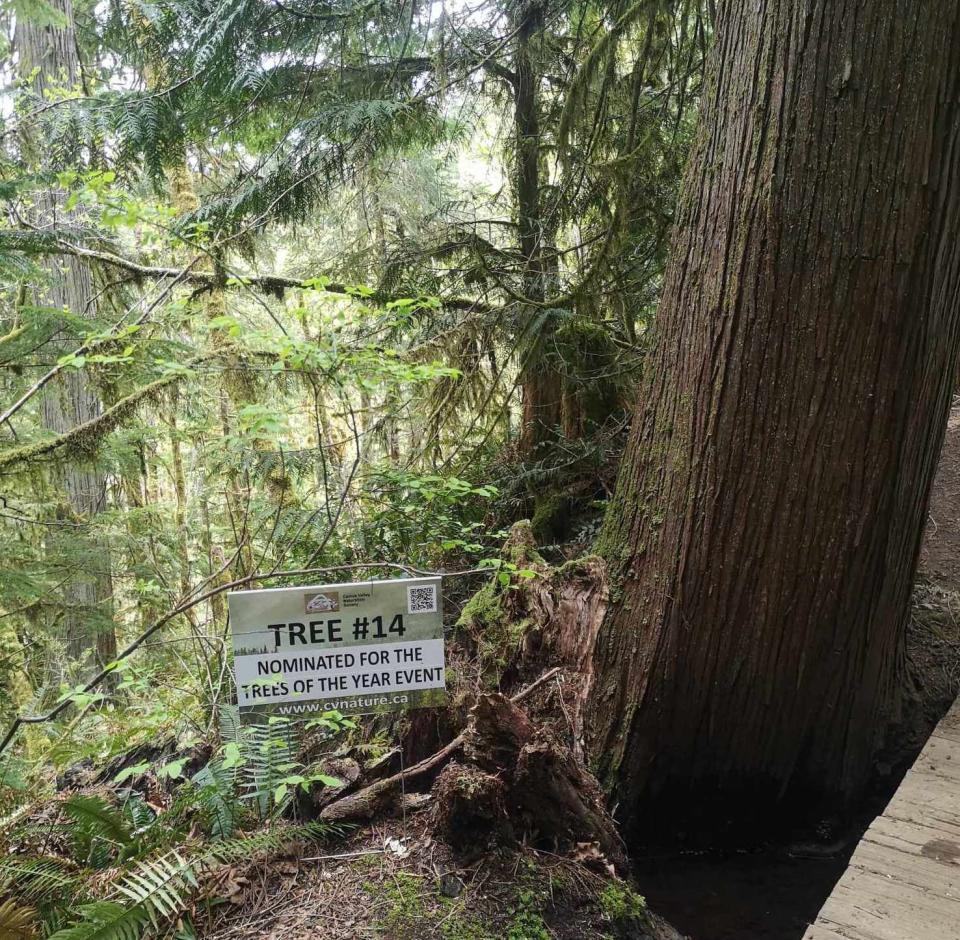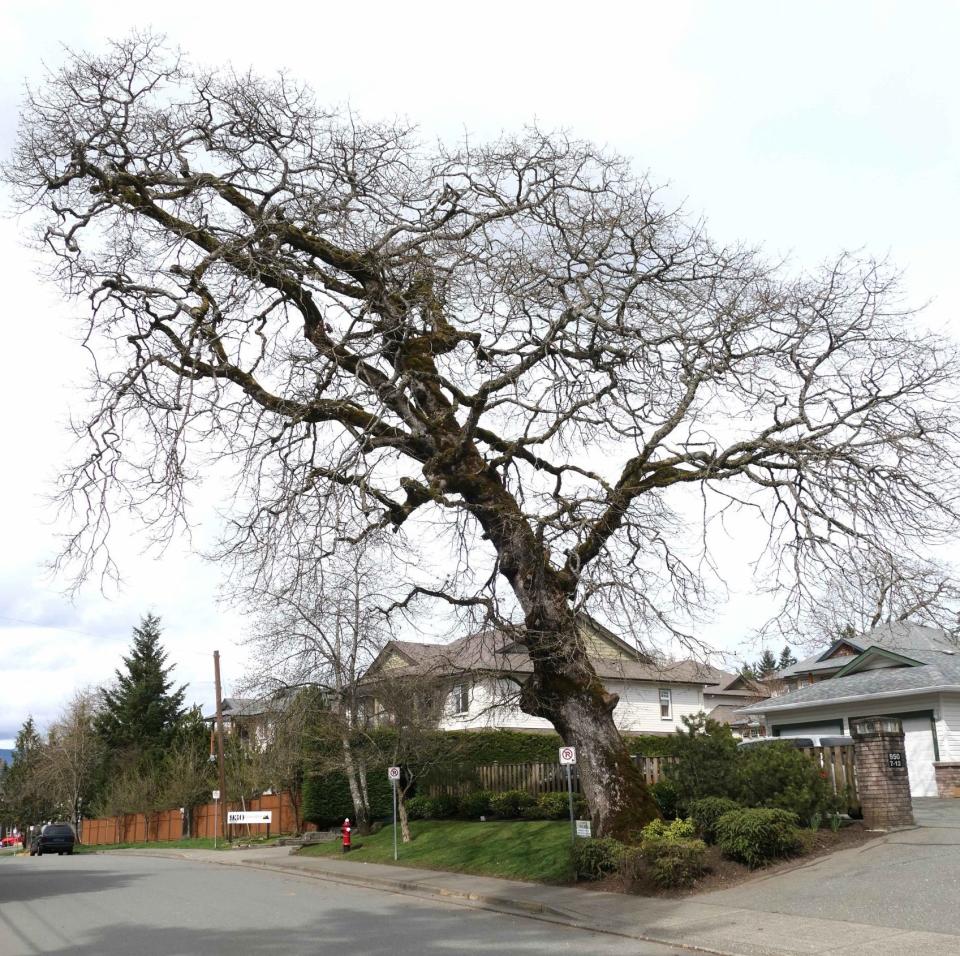More than two dozen trees featured in Comox Valley Nature’s 2024 Trees of the Year list

When Carol White first came to the Comox Valley nine years ago from Ontario, she was blown away by the trees and the overall beauty of the area.
White discovered Comox Valley Nature — a local non-profit specializing in natural history and environmental activities — through mutual gardening acquaintances who were also involved with the Comox Valley Seed Bank. She was inspired to learn more about the area around her.
She said all of the new information she was taking in about the natural environment of the Comox Valley was a big learning curve for her at first.
“Everything was different — the birds, the growing season, just the size and scale of things. It made me realize how little I actually knew,” White said, “And I guess, as you get older you realize you know less than you thought you knew about the world which is a strange thing.”
Comox Valley Nature’s main vision is “to know nature, and keep it worth knowing” which is something White keeps in mind when thinking about the environment and its future.
One initiative the organization hosts for the community is Trees of the Year, an annual occasion inviting people to nominate their favourite trees throughout Comox, Courtenay, Cumberland and the Comox Valley Regional District — all on the traditional and unceded territory of K’ómoks First Nation.
This year’s nominations have been announced, and White said the initiative is an opportunity for community members to learn more about the local natural environment by exploring the many places where these trees are located.
Trees of the Year encourages community members to visit with nature
The Trees of the Year event has been running in the region since 2018. There are no categories for what type of trees can be nominated, although Comox Valley Nature encourages people to nominate trees that are native to the area.
It used to be called Tree of the Year, but Comox Valley Nature changed it to focus on the variety of trees in the area instead of simply picking one as a winner.
Nominations ran in late winter and early spring and now Comox Valley Nature has published the 27 trees nominated for Trees of the Year 2024.
“For the months of May and June we encourage people — we call it the touring phase — we encourage people to get out and view the trees,” White said.
But the trees can be viewed at any time of the year, as their information will stay on Comox Valley Nature’s website.
White told The Discourse that Comox Valley Nature received close to 30 nominations, but had to turn down a few because the trees were on private property that was not easily accessible to view. She added that it is important that the location of the trees can be accessed by the public and viewed by those who want to see them.

Thanking the original stewards of the land
White said that walking through the forest with her dog is her daily meditation, and she’d love to see the Comox Valley continue to be the type of place that values community forests. She thinks we owe it to previous generations of people who stewarded the land and those who continue to do so today.
For the Comox Valley, this means extending gratitude to the Sahtloot, Sasitla, leeksun and Puntledge, who came together to form K’ómoks First Nation.
“There are some old growth, there are some unique specimens, and we’re really indebted to the generations that came before us who valued these trees,” White said.
“You walk into, say, Brooklyn Creek [Park] and all of a sudden, even though you’re in a town, you’re in a different environment and it’s peaceful. You just feel kind of calmer. There’s birdsong [and] there’s all kinds of plants in the understory.”
White said having parks and places where nature is thriving is very valuable to have in the community.
Comox Valley Nature’s Trees of the Year guided walks for spring are over, but White said that they are hoping to offer more guided walks in the fall when the deciduous trees are colourful.
Those who would like to learn more about the trees or go and see them can visit Comox Valley Nature’s website to learn more.

Madeline Dunnett, Local Journalism Initiative Reporter, The Discourse


